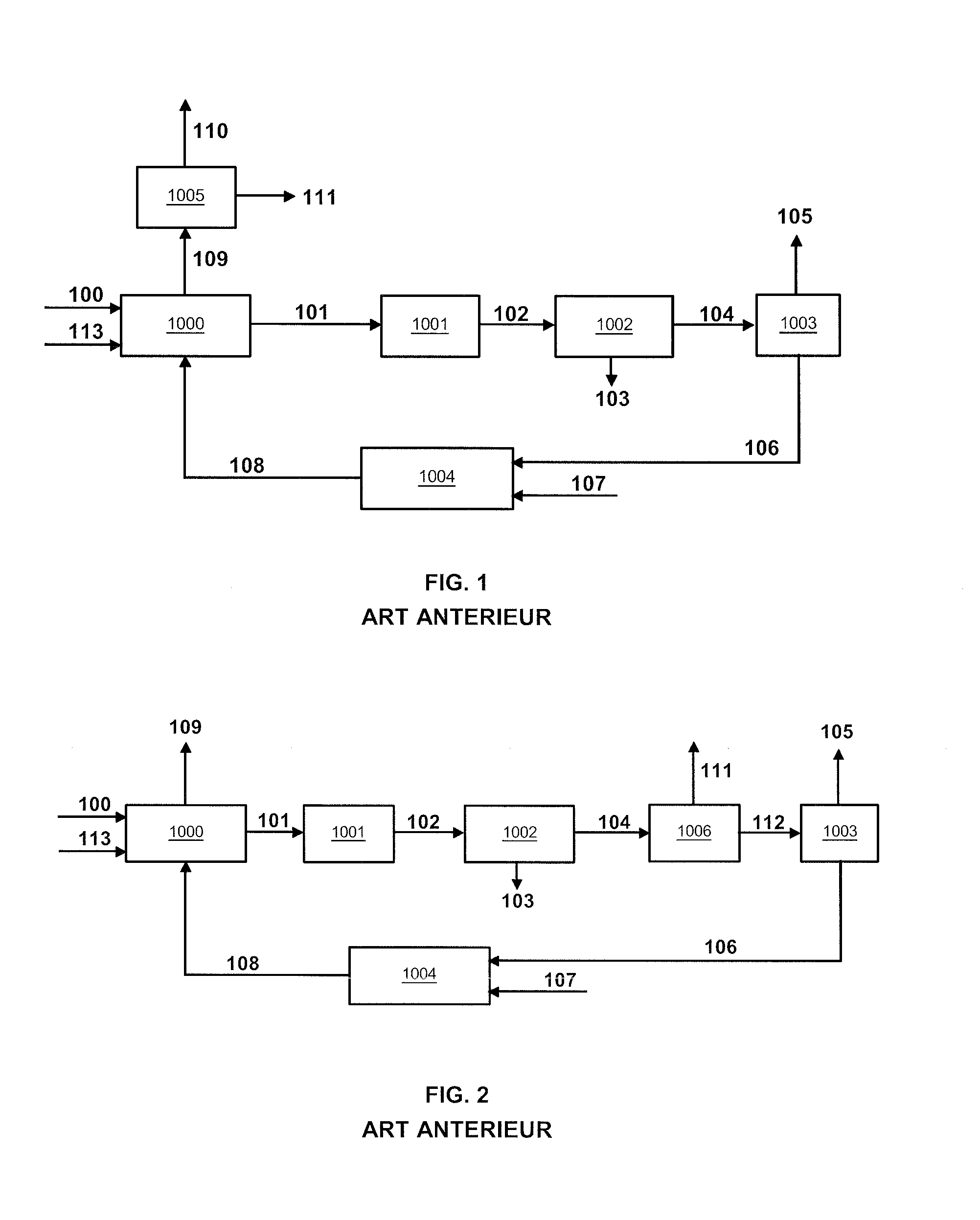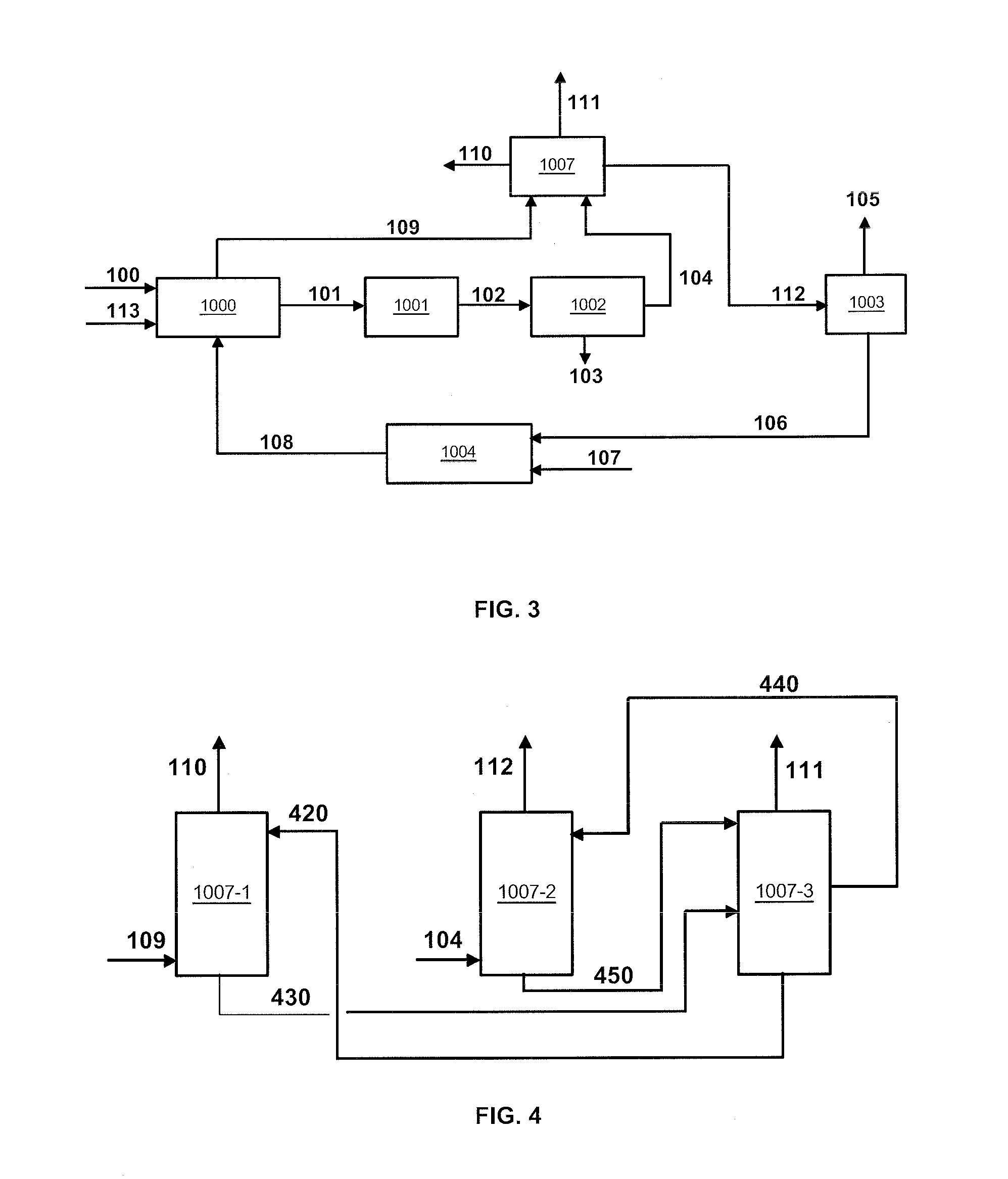Method and plant for removing acid compounds from gaseous effluents of different origins
a gaseous effluent and acid compound technology, which is applied in the direction of sulfur compounds, hydrogen sulfides, separation processes, etc., can solve the problems of high flow rate of solution to be regenerated, direct impact of energy consumption required for regeneration, and energy consumption of amine absorbent solutions commonly used today, so as to reduce the investment cost of co2 capture and energy needs, reduce the investment cost of acid compound removal plant and energy needs, and reduce the effect of energy consumption
- Summary
- Abstract
- Description
- Claims
- Application Information
AI Technical Summary
Benefits of technology
Problems solved by technology
Method used
Image
Examples
examples
[0108]The example relates to the deacidizing method according to FIGS. 3 and 4. The compositions, flow rates, temperature and pressure of gaseous effluents 104 and 109 to be deacidized are given in Table 1 hereafter.
TABLE 1Effluent 109Effluent 104(combustion gas)(syngas)Pressure (bar a)1.0226.7Temperature (° C.)172.676Flow rate (kmol / h)1364020465Vapour fraction (%)100100Molar fraction (%)Methane—4.3Hydrogen—74.3CO—0.8CO214.218.8O26.20N265.50.2H2O13.31.6Other organic—>ppm by moleconstituentsAr0.8
[0109]According to FIGS. 1 and 2 representing the prior art, effluents 104 and 109 can be treated by two distinct amine treating units. These treating units however need to respect a different CO2 removal rate for each gaseous effluent. For gas 104 representing the syngas, the CO2 removal rate has to be at least 98.5%. For effluent 109 representing the combustion gas, the CO2 removal rate has to be at least 90%.
[0110]For example, effluents 104 and 109 are treated with an absorbent solution co...
PUM
| Property | Measurement | Unit |
|---|---|---|
| Pressure | aaaaa | aaaaa |
| Pressure | aaaaa | aaaaa |
| Pressure | aaaaa | aaaaa |
Abstract
Description
Claims
Application Information
 Login to View More
Login to View More - R&D
- Intellectual Property
- Life Sciences
- Materials
- Tech Scout
- Unparalleled Data Quality
- Higher Quality Content
- 60% Fewer Hallucinations
Browse by: Latest US Patents, China's latest patents, Technical Efficacy Thesaurus, Application Domain, Technology Topic, Popular Technical Reports.
© 2025 PatSnap. All rights reserved.Legal|Privacy policy|Modern Slavery Act Transparency Statement|Sitemap|About US| Contact US: help@patsnap.com



